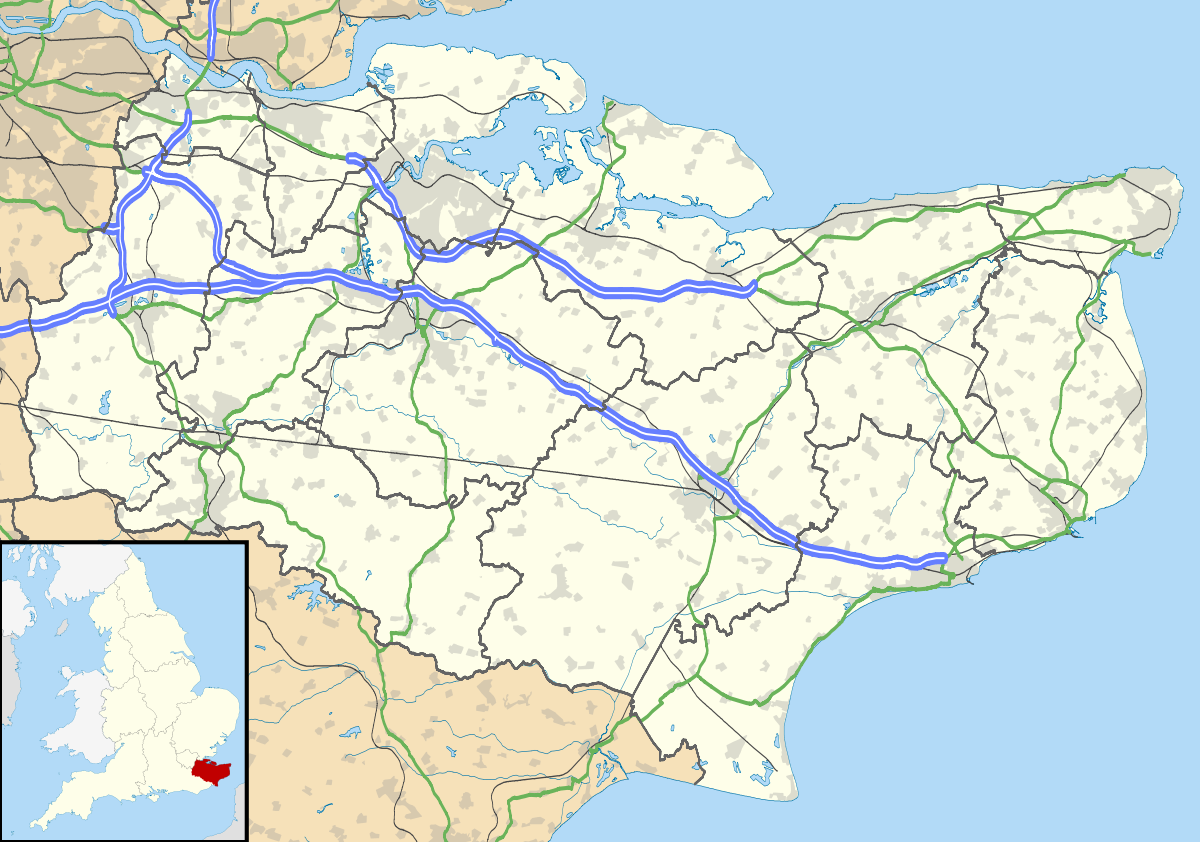OS grid reference TQ9057 Region South East Sovereign state United Kingdom Local time Tuesday 11:28 AM District Swale | Civil parish Lynsted with Kingsdown Country England Post town Sittingbourne Shire county Kent Dialling code 01795 | |
 | ||
Weather 12°C, Wind W at 18 km/h, 79% Humidity | ||
Kingsdown is a small hamlet surrounded by the villages of Frinsted, Milstead, Doddington and Lynsted in Kent, England.
Contents
- Map of Kingsdown Sittingbourne UK
- Barony of Kingsdown
- Torry Hill
- Estate management
- Kingsdown Church
- References
Map of Kingsdown, Sittingbourne, UK
The hamlet is within the civil parish of Lynsted with Kingsdown. The area around the hamlet includes the Torry Hill estate.
The hamlet was described by John Marius Wilson in his 1872 Imperial Gazetteer of England and Wales as a settlement of no more than 18 houses incorporating a population of 96.
Barony of Kingsdown
The Barony of Kingsdown was a hereditary peerage conferred on Thomas Pemberton Leigh around 1858. Lord Kingsdown never married, and his title therefore became extinct on his death in 1867. Lord Kingsdown's seat was at Torry Hill (see below) which stayed in the family, later to be known as the Leigh-Pembertons. The manor extended to the environs of the hamlet of Kingsdown and was recorded as such by Wilson in 1872.
The title was resurrected this time as a life peerage for Robin Leigh-Pemberton (from a related family line) becoming Baron Kingsdown in 1993.
Torry Hill
Torry Hill, approximately 3 km due southwest of Kingsdown hamlet, is the family estate of the Leigh-Pemberton (formerly Pemberton Leigh) line.
The estate typifies a style of environmental management encouraged by downland landed gentry. What was once simple enclosed farmland has been variously sculpted into ornamental parkland through a process of tree thinning, augmentation and managed grazing. The estate property includes eccentric country house follies such as a private cricket ground (which has been in use since the mid-19th century) and the only private Eton Fives court in the world. The association of the estate with leisure pursuits, particularly of the upper classes, is evident from at least the mid-19th century as illustrated by one report in a local newspaper:
"Royal East Kent Mounted Rifles - last Saturday the C troop of the regiment met at Torry Hill where they were entertained at luncheon by their captain, Lofus Leigh Pemberton Esq. A booth was erected in the park for that purpose and the benches were supplied by Mr Sage of the Chequers Inn, Doddington. The real purpose of the meet was for the members of the troop to compete in sword exercises for prizes...The prize cup was filled and drank out of to the health of the Queen by the competitors and company. A scratch match of cricket was afterwards played." (East Kent Gazette, 4 September 1869)
In addition a small miniature railway was constructed on the estate in the 1930s following earlier carriage drive routes. Although it is no longer in regular operation, a number of features of this railway remain including sections of track, bridges and turntables and parts of the railway are still opened on occasions. In common with other big houses on the Kent Downs, Torry Hill possesses an icehouse, used in the 19th century to provide cold storage for provisions. Other notable features include a well-preserved mounting block alongside a quiet crossroads.
Originally built in 1925, the main house was rebuilt to a Georgian design in the 1960s and only a Victorian gate-house remains on the estate. Before his death on 24 November 2013, it was the home to Robin Leigh-Pemberton, Baron Kingsdown.
The estate parkland has in recent years been used for other diverse pursuits such as a campsite for the local District Scout organisations and a grasstrack motorcycle racing venue.
The rose garden and grounds are opened to the public on limited dates throughout the summer.
Estate management
The current owners are conscious of responsible estate management. It is a privately owned working farm supporting grazing livestock, cherry orchards, and arable farming of crops like wheat. The Torry Hill cherry orchards in particular produce around 15 different varieties of cherry, a former staple product of the Kent countryside. Measures have been put in place to increase the density of gamebirds such as the partridge, woodcock and pheasant. Predators such as squirrels, stoats, weasels, foxes, rats and corvids, are kept low.
The estate participates in conservation and countryside stewardship schemes, including the establishment of conservation strips around arable fields, creating ‘beetle banks’ (raised ridges in fields to encourage aphid-consuming carabids) and leaving crops to overwinter in fields which to benefit passerines.
Kingsdown Church
The hamlet is focused around a 19th-century redundant Anglican church dedicated to St Catherine. It has been designated by English Heritage as a Grade II listed building, and is under the care of the Churches Conservation Trust.
The maintenance of Kingsdown Church was funded by Lord Kingsdown. According to a booklet from the Redundant Churches Fund, the population of the surrounding parish numbered just 96 in 1865 meaning a benefactor was essential.
Thomas Pemberton Leigh supported the building of a new church on the site of a mediaeval church (records from the rectory date back to 1313) that stood where today's nave stands. The church is believed to be the only remaining completed Anglican example of the work of Edward Welby Pugin, a noted ecclesiastical architect in Britain. The stained glass windows and possibly other internal fittings were installed by notable ecclesiastical manufacturers Hardman & Co..
The church is normally locked but a key can be obtained by arrangement. The church and a number of outlying buildings are now stranded on the south side of the M2 motorway and can be reached via a footbridge from the village of Kingsdown.
